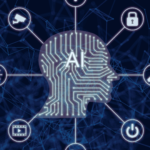As advancements in technology continue to accelerate, the role of artificial intelligence in various sectors becomes increasingly significant. Businesses, healthcare, education, and even daily life are all experiencing transformations driven by AI innovations. The future of AI promises enhanced efficiency, more personalized experiences, and new capabilities that were once thought to be the realm of science fiction.
Anticipating the developments in AI technology raises important questions about ethical considerations and potential challenges. Addressing these concerns proactively can guide the responsible integration of AI into society. Those who stay informed will be better positioned to leverage the benefits and tackle the issues arising from these changes.
In the coming years, AI is expected to become more ubiquitous, shaping how people work, communicate, and solve complex problems. Understanding the trajectory of AI will be crucial for anyone looking to navigate this evolving landscape effectively.
Historical Context of AI Development
Artificial intelligence (AI) has a rich history dating back to ancient times. Early myths and stories depicted artificial beings with intelligence. However, modern AI began in the mid-20th century.
In 1956, the term “artificial intelligence” was coined during the Dartmouth Conference. This event marked the rise of AI as a formal discipline. Researchers aimed to create machines capable of problem-solving and learning.
Significant milestones include:
- 1950s-1960s: Development of the first algorithms for machine learning.
- 1970s: The rise of expert systems, which utilized rules to emulate human decision-making.
- 1980s: The advent of neural networks rekindled interest in machine learning techniques.
Challenges arose in the late 20th century, leading to periods known as “AI winters,” where funding and interest waned.
The 21st century has seen a resurgence in AI development, driven by advancements in computational power and large datasets. Technologies such as deep learning and natural language processing emerged, enabling significant progress.
Today, AI influences various sectors, including healthcare, finance, and transportation. It continues to evolve, expanding its capabilities and applications. Understanding this historical context helps in grasping the trajectory and potential of AI in the future.
Principles of Modern AI
Modern AI operates on foundational principles that enable its capabilities. These principles focus on advanced techniques such as machine learning, cognitive computing, and natural language processing.
Machine Learning and Neural Networks
Machine learning is a key facet of AI development. It allows systems to learn from data and improve over time without explicit programming.
Neural networks, a subset of machine learning, mimic the human brain’s architecture. They consist of interconnected nodes, simulating neurons, that process information in layers.
Key aspects:
- Supervised Learning: Models are trained using labeled datasets, improving accuracy through feedback.
- Unsupervised Learning: Algorithms identify patterns in unlabelled data, revealing insights without prior knowledge.
- Reinforcement Learning: Systems learn optimal actions through trial and error, receiving rewards for correct decisions.
Cognitive Computing
Cognitive computing seeks to enhance human decision-making by simulating human thought processes. It integrates various technologies, including machine learning, natural language processing, and data analytics.
Cognitive systems analyze complicated datasets, extracting context and meaning. They are designed to interpret emotional nuances and cultural references, thereby improving the interaction experience.
Components include:
- Contextual Understanding: Systems interpret data within their surrounding circumstances to improve relevance.
- Personalization: Tailor’s responses are based on individual user behavior and preferences.
- Enhanced Reasoning: Mimics human-like thinking patterns to aid in complex decision-making.
Natural Language Processing
Natural language processing (NLP) enables machines to understand, interpret, and respond to human language. This technology allows for seamless communication between humans and AI systems.
NLP involves several intricate tasks, such as speech recognition, sentiment analysis, and language translation. It bridges the gap between human language and machine comprehension.
Important techniques:
- Tokenization: Breaks text into manageable pieces or tokens for analysis.
- Named Entity Recognition: Identifies key elements within text, such as names or locations.
- Sentiment Analysis: Assesses emotional tone to gauge user sentiment effectively.
Each principle contributes to the evolving landscape of AI, pushing the boundaries of what machines can achieve.
Ethical Considerations in AI
The rise of AI technology brings significant ethical challenges. Bias, transparency, and privacy are critical issues that demand attention to ensure responsible implementation.
Bias and Fairness
AI systems can inadvertently perpetuate or even exacerbate societal biases. This issue arises from biased training data, which can lead to unfair outcomes in areas like hiring, lending, and law enforcement. For example, if historical data reflects racial or gender bias, the AI may learn to replicate these inequalities.
To combat this, developers need to adopt techniques for bias detection and correction. Strategies include diversifying training datasets and implementing fairness constraints. Regular audits can help identify biases and ensure AI systems make equitable decisions. Stakeholder engagement is also vital to ensure diverse perspectives are considered in AI design.
Transparency and Accountability
Transparency in AI algorithms is essential for building trust. Stakeholders, including users and regulators, must understand how decisions are made. This can involve providing clear explanations of AI processes and the rationale behind outcomes.
Accountability frameworks are necessary to ensure that individuals and organizations are held responsible for AI actions. This could mean defining liability in case of AI errors or harm. Establishing ethical guidelines and industry standards can aid in maintaining accountability, and guiding organizations in responsible AI practices.
Privacy and Security
AI systems often rely on large datasets, raising concerns about personal privacy. The collection and use of sensitive data must comply with legal standards, such as GDPR. Without proper measures, individuals’ data could be misused or exposed to breaches.
To enhance security, organizations should implement robust data protection strategies. Techniques like data anonymization and encryption can help safeguard personal information. Developing a culture of privacy within organizations also contributes to ethical AI use, ensuring users’ rights are respected throughout all stages of AI deployment.
Economic Implications of AI
The integration of AI technologies into various sectors brings significant transformations to the economy. Key aspects include advancements in industry, shifts in the job market, and changes in global economic dynamics.
AI in Industry and Business
AI enhances productivity and efficiency across industries. For instance, manufacturing processes now incorporate AI for predictive maintenance, minimizing downtime.
- Automation of Routine Tasks: Companies utilize AI to automate repetitive tasks, allowing human workers to focus on more complex issues.
- Data-Driven Decision Making: With AI analyzing large data sets, businesses make informed decisions faster, improving their competitiveness.
This technological shift leads to reduced operational costs and higher profit margins, influencing market structures profoundly.
Job Market Evolution
AI is reshaping the job landscape. As machines take over manual and repetitive tasks, some job categories face a decline.
- Emergence of New Roles: Despite concerns about job losses, AI creates opportunities in tech, data analysis, and maintenance roles.
- Reskilling and Upskilling: Workers need training to adapt to AI-driven environments. This trend triggers a demand for educational programs focused on technology skills.
Economic adjustments require proactive measures from businesses and governments to support labor transitions.
Global Economic Shifts
AI’s influence extends beyond national borders, promoting global commerce. Countries adopting AI technologies can enhance their economic competitiveness.
- Changing Trade Dynamics: AI enables countries to optimize production and logistics, altering traditional trade patterns.
- Investment Flows: Nations that prioritize AI research attract foreign investments, leading to economic growth.
These developments signify a shift in economic power, with countries that embrace AI technologies potentially gaining significant advantages in the global market.
Technological Advancements in AI
Recent developments in artificial intelligence are heavily influenced by emerging technologies. Key areas such as quantum computing, autonomous systems, and healthcare applications are set to reshape the field, introducing new capabilities and efficiency.
Quantum Computing
Quantum computing represents a significant leap in processing power. Traditional computers struggle with complex calculations. Quantum systems leverage qubits, allowing them to process vast amounts of data simultaneously.
This technology can enhance machine learning algorithms, making them faster and more efficient. Applications include optimizing logistics, improving data security, and accelerating drug discovery. Companies like IBM and Google are pioneering quantum research, aiming to integrate these systems with AI.
Challenges remain, particularly in developing error-correcting models to maintain stability and reliability. As advancements continue, the synergy between AI and quantum computing promises transformative effects across industries.
Autonomous Systems
Autonomous systems are redefining navigation and robotics. These systems utilize AI to perform tasks without human intervention. Self-driving cars serve as a prominent example, relying on sensors and machine learning for safe navigation.
Drones are also making waves in sectors such as agriculture and delivery services. Equipped with AI, these drones can analyze terrain, monitor crop health, and optimize delivery routes.
The deployment of autonomous systems is not without challenges. Regulatory hurdles and public acceptance pose significant barriers. Ongoing development focuses on enhancing safety features and ensuring compliance with regulations to increase trust in these technologies.
AI in Healthcare
AI is revolutionizing healthcare practices. Through predictive analytics and machine learning, AI can analyze patient data to identify trends and predict potential health issues. This leads to more personalized patient care.
Applications include diagnostic tools that enhance image analysis for diseases such as cancer. AI algorithms can assist radiologists by highlighting areas of concern in medical images.
Moreover, AI-driven chatbots and virtual assistants improve patient engagement and streamline administrative tasks. By automating routine inquiries, healthcare providers can focus on clinical responsibilities. As AI integration progresses, it promises to improve outcomes and efficiency in healthcare delivery.
Societal Impact of AI
The integration of AI into daily routines is transforming lifestyles and reshaping various sectors. Its influence spans everyday activities, entertainment choices, and educational methodologies, impacting how people interact with technology and each other.
AI in Everyday Life
AI is increasingly becoming an integral part of everyday activities. Home assistants, like Amazon’s Alexa and Google Home, help manage daily tasks, control smart devices, and provide information efficiently.
In transportation, AI-driven applications optimize routes, improve safety, and enhance navigation. Ride-sharing platforms, such as Uber or Lyft, utilize AI algorithms to match riders with drivers, making transportation more accessible.
Customer service has also seen significant changes. Chatbots and virtual assistants provide immediate responses to inquiries, streamlining communication and enhancing user experience across various sectors.
AI and Entertainment
AI is revolutionizing the entertainment industry by personalizing content consumption. Streaming services like Netflix use AI algorithms to analyze viewing habits, curating recommendations that match users’ preferences.
In gaming, AI enhances user experiences through adaptive difficulty levels and intelligent NPC behavior, creating more engaging gameplay.
AI is transforming digital media by enabling seamless face-swapping and realistic image manipulation. A faceswap tool leverages deep learning to create high-quality edits for entertainment, social media, and professional content creation. Beyond face swapping, AI also enhances filmmaking, gaming, and art – automating tasks such as scene generation, special effects, and AI-generated visuals, allowing creators to push creative boundaries.
AI and Fashion
Artificial intelligence is bringing a change into the fashion industry by driving innovation in design, production, and customer experience. From predictive analytics to virtual stylists, AI is shaping the future of fashion in ways that were once unimaginable.
AI-powered platforms are leveraging machine learning algorithms to analyze vast amounts of data from social media, runway shows, and consumer behavior. These insights help designers predict upcoming trends, optimize collections, and create fashion pieces that align with evolving customer preferences. The generation of AI Model for Fashion images is also being used by brands in crafting unique, data-backed styles that resonate with modern consumers.
AI is transforming how consumers shop for fashion, offering personalized recommendations based on browsing history and style preferences. Virtual try-on technologies, powered by AI, allow shoppers to see how garments fit and look on them before making a purchase. Sustainability is another growing concern in the fashion industry, and AI is playing a crucial role in reducing waste and improving efficiency. As AI technology continues to evolve, its integration into fashion will expand, bringing new possibilities. By combining data-driven insights with creativity, AI is not just streamlining the fashion industry but also redefining its future.
AI and Education
In education, AI is reshaping learning experiences. Adaptive learning platforms tailor educational content to individual students’ needs, allowing for personalized pacing and understanding.
AI is utilized for administrative tasks, such as grading and managing student data, which increases efficiency for educators. This allows teachers to focus more on student engagement and instructional quality.
Virtual tutoring powered by AI can provide additional support to learners outside the classroom. These tools augment traditional teaching methods and help bridge learning gaps, making education more accessible to diverse populations.
AI Governance and Policies
AI governance and policies play a crucial role in shaping the future of artificial intelligence. The importance of international cooperation, the development of regulatory frameworks, and the standardization of technologies are essential for ensuring safe and ethical AI deployment.
International Cooperation on AI
International cooperation on AI involves collaboration among nations to establish shared goals, ethical standards, and best practices. Organizations such as the OECD and the Global Partnership on AI are proactive in setting frameworks that promote responsible innovation.
Key benefits include:
- Knowledge Sharing: Nations can exchange insights on AI advancements.
- Joint Research Initiatives: Collaborative projects can tackle global challenges like climate change and public health.
- Unified Ethical Standards: Establishing common guidelines helps ensure ethical AI use across borders.
This type of partnership can mitigate risks associated with competitive AI races and misuse of technology.
Regulatory Frameworks
Regulatory frameworks are essential for ensuring the safe and ethical deployment of AI technologies. Governments are beginning to draft legislation that addresses issues like data privacy, algorithmic accountability, and transparency.
Important elements include:
- Data Protection Laws: Ensuring that personal data is secure and used ethically.
- Accountability Measures: Defining who is responsible when AI systems cause harm.
- Compliance Requirements: Organizations must adhere to rules that promote transparency and fairness in AI systems.
Development of these frameworks requires an inclusive approach, involving various stakeholders such as industry experts, policymakers, and civil society.
Standardization of AI Technologies
Standardization of AI technologies focuses on creating uniform guidelines and protocols for development and deployment. This aims to enhance interoperability, safety, and efficiency in AI applications.
Key aspects involve:
- Technical Standards: Development of unified benchmarks and metrics for performance evaluation.
- Compliance Standards: Ensuring products meet specific safety and ethical requirements.
- Best Practice Guidelines: Providing recommendations on responsible AI usage in various sectors.
Standardization can promote consumer trust and facilitate smoother integration of AI technologies into existing systems.
The Future of Work with AI
Artificial intelligence is set to redefine the workplace. It will bring significant shifts through automation, enhance collaboration between humans and machines, and create new job sectors.
Workplace Automation
Automation will transform repetitive tasks across various industries. By utilizing AI-driven systems, organizations can streamline processes such as data entry, inventory management, and customer service.
Benefits of Automation:
- Increased Efficiency: AI can perform tasks faster and with fewer errors than humans.
- Cost Reduction: Organizations save on labor costs by automating routine functions.
As a result, employees can focus on more strategic and creative aspects of their work. This shift could lead to higher job satisfaction and better productivity in many sectors.
Human-machine Collaboration
The integration of AI in the workplace fosters collaboration between humans and machines. This partnership will enhance capabilities rather than replace jobs.
Key Aspects of Collaboration:
- Decision Support: AI can analyze vast amounts of data to inform human decision-making.
- Skill Enhancement: Workers can leverage AI tools to improve their skill sets.
As employees and AI systems work together, they will create a more dynamic and innovative environment. This relationship encourages continuous learning and adaptation in the workforce.
Emerging Job Sectors
AI’s expansion will pave the way for new job sectors previously unheard of. Fields such as AI ethics, data analysis, and machine learning engineering are likely to grow.
Potential Job Roles Include:
- AI Ethics Specialist: Ensuring responsible AI deployment.
- Data Curator: Managing and preparing data for machine learning.
These roles will require new skill sets, prompting educational institutions to adapt their curricula. The demand for talent in these areas will shape future workforce training initiatives.
Limitations and Challenges of AI
AI faces several significant limitations and challenges that affect its development and implementation. Technical hurdles, ethical dilemmas, and concerns regarding safety and control are among the most pressing issues in the field.
Technical Hurdles
The complexity of AI systems presents numerous technical challenges. Data quality is paramount; AI models require extensive, high-quality datasets for training. Inaccurate or biased data can lead to flawed outputs.
Scalability is another challenge. As models grow larger, they demand more computational resources. This can limit accessibility for smaller organizations. Additionally, issues related to algorithm interpretability complicate the understanding of how decisions are made, making it hard for users to trust AI.
Ethical Dilemmas
Ethical concerns around AI include accountability and bias. The question of who is responsible for an AI’s actions, especially in critical applications like healthcare or autonomous vehicles, remains unresolved.
Bias in AI algorithms can mirror societal prejudices, negatively impacting marginalized groups. This raises the need for guidelines to ensure fairness in AI decision-making. Moreover, there are concerns regarding privacy, particularly when AI systems process sensitive personal information.
AI Safety and Control
Ensuring AI systems operate safely is vital, especially as they become more autonomous. Robustness against adversarial attacks is essential; AI must withstand attempts to manipulate its outputs.
Control mechanisms must be established to prevent unintended consequences. The challenge lies in designing systems with clear boundaries to manage their actions. As AI capabilities expand, creating effective oversight becomes crucial to ensure alignment with human values and intentions.
Exploring the Future of AI Research and Trends
The future of AI research is marked by innovative methodologies, upcoming technological breakthroughs, and varied potential outlooks. Each of these aspects highlights the trajectory that AI development might take in the coming years.
Innovative AI Research
Current trends in AI research emphasize advancements in areas like machine learning, natural language processing, and computer vision. Researchers are focusing on creating algorithms that can learn more efficiently and generalize knowledge across different tasks.
A prominent area of exploration involves explainable AI (XAI), which aims to make AI systems more transparent. As systems become integrated into more critical areas, understanding their decision-making process becomes pivotal.
Furthermore, multi-modal AI, which combines various types of data inputs, is gaining traction. This allows AI systems to interpret and analyze information more comprehensively, leading to better performance and user interaction.
Predicted Technological Breakthroughs
Several technological breakthroughs are anticipated in AI within the next decade. One significant area is quantum computing, which could revolutionize machine learning capabilities by processing vast amounts of data exponentially faster than classical computers.
Breakthroughs in hardware, such as neuromorphic chips, aim to mimic the human brain’s architecture, allowing for more energy-efficient and powerful AI systems.
Additionally, the integration of 5G technology is expected to enhance AI applications in real-time analytics and IoT devices. This could facilitate seamless communication among devices, enabling smarter and more responsive applications.
Potential Outlooks
The outlook for AI is multifaceted, with implications across various industries. In healthcare, AI’s ability to analyze patient data could enhance diagnostics and personalized treatments.
In finance, predictive analytics powered by AI might improve risk assessment and fraud detection.
However, ethical considerations surrounding AI deployment remain crucial. Potential risks include bias in AI algorithms and job displacement due to automation. Addressing these challenges will be critical for responsible AI development in the future.





